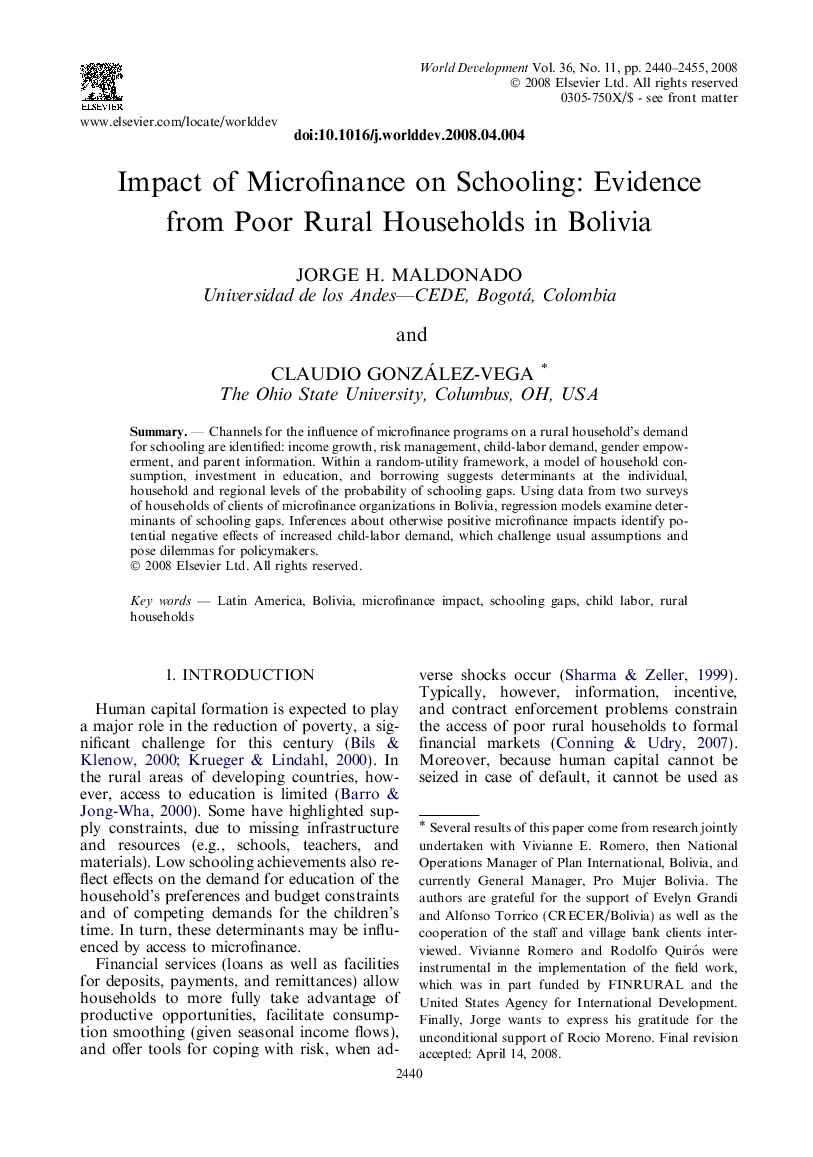| Article ID | Journal | Published Year | Pages | File Type |
|---|---|---|---|---|
| 989374 | World Development | 2008 | 16 Pages |
Abstract
Channels for the influence of microfinance programs on a rural household's demand for schooling are identified: income growth, risk management, child-labor demand, gender empowerment, and parent information. Within a random-utility framework, a model of household consumption, investment in education, and borrowing suggests determinants at the individual, household and regional levels of the probability of schooling gaps. Using data from two surveys of households of clients of microfinance organizations in Bolivia, regression models examine determinants of schooling gaps. Inferences about otherwise positive microfinance impacts identify potential negative effects of increased child-labor demand, which challenge usual assumptions and pose dilemmas for policymakers.
Related Topics
Social Sciences and Humanities
Economics, Econometrics and Finance
Economics and Econometrics
Authors
Jorge H. Maldonado, Claudio González-Vega,
